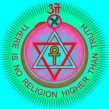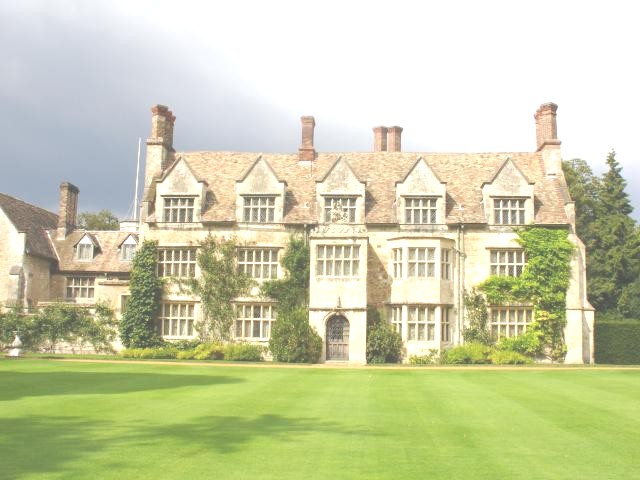The Theosophical Society,

The Writings of C

Charles
Webster Leadbeater
(1858
– 1934)
The Mystic Chord
by
C
First published 1909
In
connexion with the vision of which I gave an analysis on p47, questions have
been
asked by several as to the method by which a person at a distance of some
thousands
of miles can be instantly found by a trained clairvoyant. Apparently
this
remains somewhat of a mystery to many, so I will endeavour to give an
explanation
of the plan commonly adopted, though it is not easy to put it quite
plainly.
A clear expression of super-physical facts cannot be achieved in
physical
words, for the latter are always to some extent misleading even when
they
seem most illuminative. Man's various forces and qualities, manifesting in
his
bodies as vibrations, send out for each vehicle what may be called a
keynote.
Take his astral body as an example.
From
the number of different vibrations which are habitual to that astral body there
emerges a sort of average tone, which we may call the keynote of this man on
the astral plane. It is obviously conceivable that there may be a considerable
number of ordinary men whose astral keynote is practically the same, so that
this alone would not suffice to distinguish them with certainty. But there is a
similar average tone for each man's mental body, for his causal body, and even
for the etheric part of his physical body; and there have never yet been found
two persons whose keynotes were identical at all these levels, so as to make
exactly the same chord when struck simultaneously. Therefore the chord of each
man is unique, and furnishes a means by which he can always be distinguished
from the rest of the world.
Among
millions of primitive savages there may possibly be cases where
development
is as yet so slight that the chords are scarcely clear enough for
the
differences between them to be observed, but with any of the higher races
there
is never the least difficulty, nor is there any risk of confusion. Whether
the
man be sleeping or waking, living or dead, his chord remains the same, and
he
can always be found by it. How can this be so, it may be asked, when he is
resting
in the heaven-world, and has therefore no astral or etheric body to emit
the
characteristic sound? So long as the causal body itself remains, it has
always
attached to it its permanent atoms, one belonging to each of the planes,
and
therefore, wherever he goes, the man in his causal body carries his chord
with
him, for the single atom is quite sufficient to give out the distinctive
sound.
The
trained seer, who is able to sense the chord, attunes his own vehicles for the
moment exactly to it, and then by an effort of will sends forth its sound.
Wherever
in the three worlds that man who is sought may be, this evokes an instantaneous
response from him. If he be living in the physical body, it is quite possible
that in that lower vehicle he may be conscious only of a slight shock, and may
not in the least know what has caused it. But his causal body lights up
instantly - leaps up like a great flame, and this response is at once visible to
the seer, so that by that one action the man is found, and a magnetic line of
communication is established. The seer can use that line as a kind of
telescope, or if he prefers he can send his consciousness flashing along it
with the speed of light, and see from the other end of it, as it were. The
combination of sounds which will produce a man's chord is his true occult name;
and it is in this sense that it has been said that when a man's true name is
called he instantly replies, wherever he may be. Some vague tradition of this
is probably at the back of the idea so widely spread among savage nations, that
a man's real name is a part of him, and must be carefully concealed, because
one who knows it has a certain power over him, and can work magic upon him.
Thus
also it is said that the man's true name is changed at each initiation, since
each
such ceremony is at once the official recognition and the fulfilment of a
progress
by which he has, as it were, raised himself to a higher key, putting an
additional
strain upon the strings of his instrument, and evoking from it far
grander
music, so that thenceforward his chord must be sounded differently.
This
name of the man must not be confused with the hidden name of the Augoeides, for
that is the chord of the three principles of the Ego, produced by the
vibrations of the âtmic, buddhic and mental atoms, and the Monad behind them.
In order to avoid such confusion we must keep clearly in mind the distinction
between two manifestations of the man at different levels. The correspondence
between these two manifestations is so close that we may almost consider the
lower as the repetition of the higher. The Ego is triple, consisting of âtmâ,
buddhi, manas, three constituents each existing on its own plane - the âtmâ on
the nirvânic, the buddhi on the buddhic, and the manas on the highest level of
the mental.
This
Ego inhabits a causal body, a vehicle built of the matter of the lowest of
the
three planes to which he belongs. He then puts himself further down into
manifestation,
and takes three lower vehicles, the mental, astral and physical
bodies.
His chord in this lower manifestation is that which we have been
describing,
and consists of his own note and those of the three lower vehicles.
Just
as the Ego is triple, so is the Monad, and this also has its three
constituents, each existing on its own plane; but in this case the three planes
are the first, second and third of our system, and the nirvânic is the lowest
of them instead of the highest. But on that nirvânic level it takes to itself a
manifestation, and we call it the Monad in its âtmic vehicle, or sometimes the
triple âtmâ; and this is for it what the causal body is for the Ego. Just as
the Ego takes on three lower bodies (mental, astral, physical), the first of
which (the mental) is on the lower part of his own plane, and the lowest (the
physical) two planes below, so the Monad takes on three lower manifestations
(which we commonly call âtmâ, buddhi, manas), the first of which is on the
lower part of its plane, and the lowest two planes below that.
It
will thus be seen that the causal body is to the Monad what the physical body
is to the Ego. If we think of the Ego as the soul of the physical body, we may consider
the Monad as the soul of the Ego in turn. Thus the chord of the Augoeides (the
glorified Ego in his causal body) consists of the note of the Monad, with those
of its manifestations, âtmâ, buddhi, manas.
It
must of course be understood that the chord cannot be accurately considered as
sound in the sense in which we use that word on this plane. It has been
suggested to me that an analogy which is in some respects better is that of the
combination of lines in a spectrum. Each of the elements known to us is
instantly recognisable by its spectrum, in whatever star it may appear, no
matter how great the distance may be - so long as the lines are bright enough
to be seen at all. But the chord of which we have been speaking is not actually
either heard or seen; it is received by a complex perception which requires the
practically simultaneous activity of the consciousness in the causal body and
in all the lower vehicles. Even with regard to ordinary astral perception it is
misleading (though practically unavoidable) to speak of 'hearing' and 'seeing'.
These terms connote for us the idea of certain sense-organs which receive
impressions of a well-defined type.
To
see implies the possession of an eye, to hear implies the existence of an ear.
But no such sense-organs are to be found on the astral plane. It is true that
the
astral
body is an exact counterpart of the physical, and that it consequently
shows
eyes and ears, nose and mouth, hands and feet, just as the latter does.
But
when functioning in the astral body we do not walk upon the astral
counterparts
of our physical feet, nor do we see and hear with the counterparts
of
our physical eyes and ears. Each particle in an astral body is capable of
receiving
a certain set of vibrations - those belonging to its own level, and
those
only. If we divide all astral vibrations into seven sets, just like seven
octaves
in music, each octave will correspond to a subplane, and only a particle
(in
the astral body) which is built of matter belonging to that subplane can
respond
to the vibrations of that octave. So 'to be upon a certain subplane in
the
astral' is to have developed the sensitiveness of only those particles in
one's
astral body which belong to that subplane, so that one can perceive the
matter
and the inhabitants of that subplane only.
To
have perfect vision upon the astral plane means to have developed sensitiveness
in all particles of the astral body, so that all the subplanes are
simultaneously visible. But even though a man has developed the particles of
one subplane only, if those are fully developed he will have on that subplane a
power of perception equivalent to all of our physical senses. If he perceives
an object at all, he will in that one act of perception receive from it an
impression which conveys all that we learn down here through those various
channels which we call the senses; he will simultaneously see, hear, and feel
it. The instantaneous perception which belongs to higher planes is still
further removed from the clumsy and partial action of the physical senses. In
order to see how the chord helps the clairvoyant to find any given person, it
must also be understood that the vibrations which cause it are communicated by
the man to any object which is for some time in close contact with him, and
therefore permeated by his magnetism.
A
lock of his hair, an article of clothing which he has worn, a letter which he
has
written - any of these is sufficient to give the chord to one who knows how
to
perceive it. It can also be obtained very readily from a photograph, which
seems
more curious, since the photograph need not have been in direct contact
with
the person whom it represents. Even untrained clairvoyants, who have no
scientific
knowledge of the subject, instinctively recognise the necessity of
bringing
themselves en rapport with those whom they seek by means of some such objects.
In
the case of the vision described last month the letter which led to the investigations
was the link with the writer. It is not necessary for the seer to hold the
letter in his hand while examining the case, or even to have it near him.
Having once held the letter and sensed the chord, he is able to remember it and
reproduce it, just as any one with a good memory might remember a face after
seeing it once. Some such link as this is always necessary to find a person
previously unknown. We had recently another case where a man had died somewhere
in the Congo, but as no photograph of him was sent by the friend who wrote
about him, it was necessary first to seek that friend (somewhere in
There
are, however, other methods of finding people at a distance. One which is very
effective requires higher development than that just described. A man who is
able to raise his consciousness to the atomic level of the buddhic plane there
finds
himself absolutely in union with all his fellow-men - and therefore of
course
among the rest with the person whom he seeks. He draws his consciousness up
into this unity along his own line, and he has only to put himself out again
along the line of that other person in order to find him. There are always
various ways of exercising clairvoyance, and each student employs that which
comes most naturally to him. If he has not fully studied his subject, he often
thinks his own method the only one possible, but wider knowledge soon disabuses
him of that idea. Search this site
The Theosophical Society,
Cardiff Theosophical Society
in Wales
Cardiff, Wales, UK. CF24 – 1DL
_________________
Wales Picture Gallery
The
Great Orme
Llandudno
Promenade
Great
Orme Tramway
New
Radnor
Blaenavon
Ironworks
Llandrindod
Wells
Cardiff Theosophical Society
in Wales
Cardiff, Wales, UK. CF24 – 1DL
Presteign
Railway
Caerwent Roman Ruins
Denbigh
Nefyn
Penisarwaen
Cardiff Theosophical Society
in Wales
Cardiff, Wales, UK. CF24 – 1DL






























